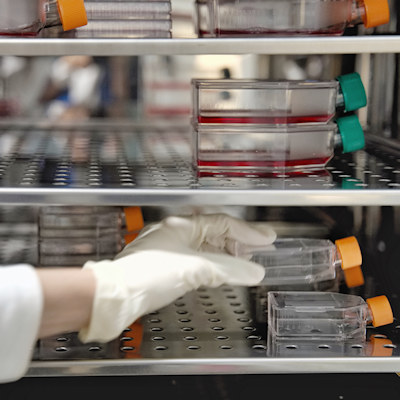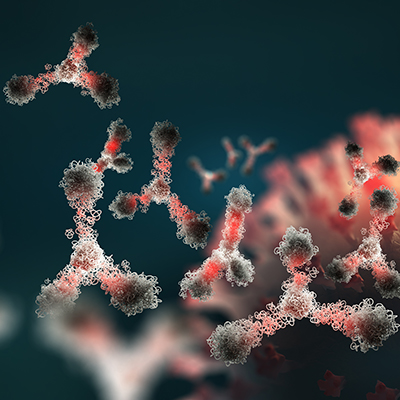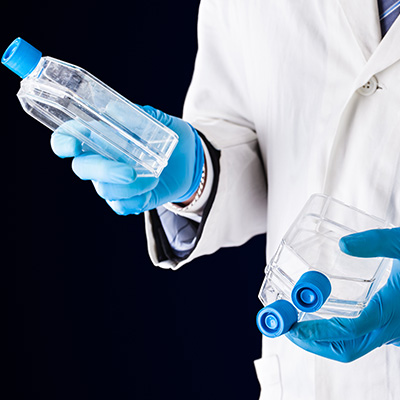May 10, 2021 -- The need for speed and accuracy in the development of therapeutic antibodies has prompted Berkeley Lights to upgrade its optofluidic tools to help customers improve the quality of their therapeutic antibody products. John Proctor, PhD, senior vice president of antibody therapeutics at Berkeley Lights, spoke with ScienceBoard.net about some technological advancements the company has recently launched.
A roadmap to selecting high quality cells for antibody production
Currently, within the therapeutic antibody discovery space, this is a quandary. Companies can select cell lines that produce high quantities of antibodies, but it is exceedingly difficult to determine if the antibodies are being developed in a quality way. Variation in the cells that assemble proteins and differences in antibody characteristics can cause problems during manufacturing scale-up.

Unlike other next-generation biologics, the safety and quality requirements for therapeutic antibodies from the U.S. Food and Drug Administration are well defined, according to Proctor. The company has examined the information customers are required to submit to regulatory agencies during therapeutic antibody development to see which aspects they can help with. For instance, Berkeley Lights' new aggregation assay will help customers pick quality cells early on, so they don't have to worry about downstream manufacturing issues during the clinical investigation or regulatory filing stages.
The aggregation assay is part of an assay series called Opto Assure that Berkeley Lights recently debuted to assist customers with efficient cell line development. Aggregation is a serious concern when it comes to antibody production, which prevents them from being used as therapeutics.
While this is a generally known problem, it is not the only one. Proctor's team at Berkeley Lights took the opportunity to receive input from current and prospective customers on their quality-related needs, with the goal of determining which assays their customers needed and their priority status.
Proctor explained that not all clones produce the best quality antibodies for some customers during downstream bioprocessing. The company's aggregation assay uses the Beacon system's optical train to view aggregate formation and associated antibodies within NanoPen chambers. This helps customers eliminate cell clones that produce aggregates early in the therapeutic antibody development process.
The company plans to release multiple additional assays, resulting in a continuous release of quality type assays for its therapeutic antibody discovery customers, Proctor said. Next up in the lineup is a cell enrichment assay that will help companies select cells that produce high quantity/high quality antibodies.
Improving selection and validation of therapeutic antibodies
Berkeley Lights has also recently launched version 4.0 of its Opto Plasma B Discovery workflow, its broadest workflow released to date, according to Proctor. With earlier versions of this workflow, the company has been able to help customers reduce the time needed to identify lead antibodies from months or years to a matter of just days. Now, the 4.0 workflow can screen B cells on a nearly twofold scale increase (from 45,000 to 80,000 cells) with the expanded positive hit capacity on OptoSelect chips that allows for read-based recovery and export of over 1,000 hits (antibody sequences).
"We expanded every aspect of this workflow, except for the timeline," Proctor said.
The updated workflow expands beyond hit recovery to include re-expression of those hits. This aspect of the workflow takes hits and re-expresses them in a different cell line to confirm that the sequence does what the screen said it did. Hit validation is not an uncommon practice in the antibody discovery process, but it does take companies a very long time to do it, Proctor said. With this in mind, the Berkeley Lights team created a rapid re-expression kit that, within two days, can take antibody sequences off of the Beacon system, put them in a different cell, and have that cell express the sequence.
Using Berkeley Lights' OptoSeq BCR, messenger RNA (mRNA) is captured on barcoded beads for on-chip complementary DNA (cDNA) synthesis which are then recovered in bulk and analyzed using software to provide full-length sequences. The method is unique in that beads are dual-coated, with an optical barcode (which links sequences to pens) and a chemical barcode (which links sequences to the barcode itself).
After using the Beacon system to produce and recover antibody hits, reconfirmation can be achieved by deploying any basic enzyme-linked immunosorbent assay (ELISA)-based system to help customers avoid any bias with "independent confirmation." Customers can also take the cells and conduct reconfirmation back on the Beacon system, which Proctor said many will do because it will be very fast and needs very few cells.
The ability to identify sequences and tie that back to specific pens (cell lines), in tandem, is a critical benefit of the 4.0 workflow, Proctor noted. It is typical to have at least three assays in any given antibody discovery workflow (i.e., binding assay, cross reactivity assay, and functional assay), and it is important to know which antibodies are functional and which cells are producing them. OptoSeq BCR and the re-expression kit help companies do this, all in an accelerated timeline.
Lessons learned from COVID-19
Speed is the name of the game during the COVID-19 pandemic, and Berkeley Lights claims that its Beacon system produces anti-SARS-CoV-2 antibody hits in record-breaking times. For instance, the company is awaiting the results of the AstraZeneca phase III trial for its COVID-19 antibody cocktail, containing two antibodies licensed from Vanderbilt University and discovered on the Beacon system.
With some antibody approvals being recently revoked and others not making as much developmental progress as expected, Proctor is excited and hopeful to see the results from the AstraZeneca trial.
Generally, most companies have already started making the transition away from COVID-19 antibody discovery or characterization efforts. They are taking what they have learned during this time, including the speed at which they can work, to figure out how to apply those lessons to the next pandemic.
Ultimately, it's about finding a balance between going really slowly, but ensuring optimal safety, and going really quickly, but making some concessions.
"Berkeley Lights will participate by making sure that people have access to the early materials that could become therapeutics and then as regulatory decisions are made, start to build in quality assays into workflows so that people can go even faster when needed," Proctor said.
Copyright © 2021 scienceboard.net










